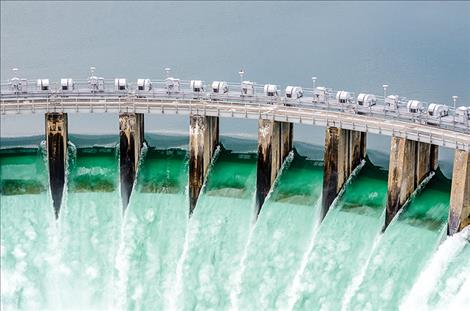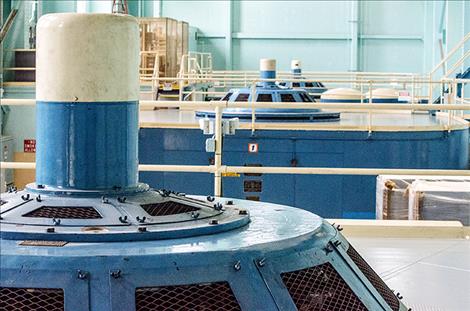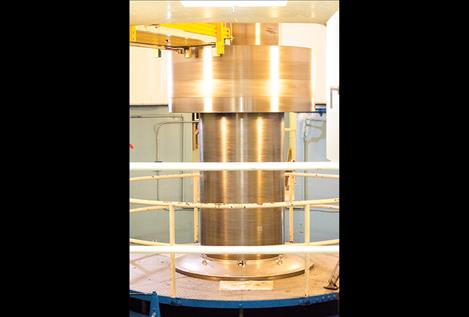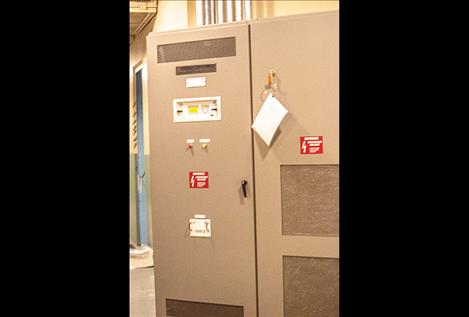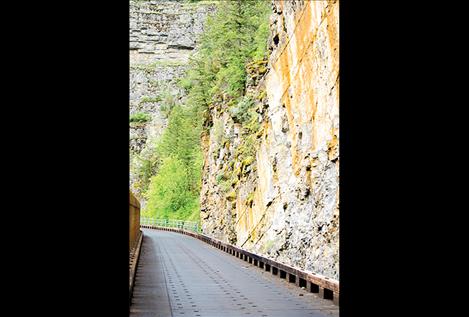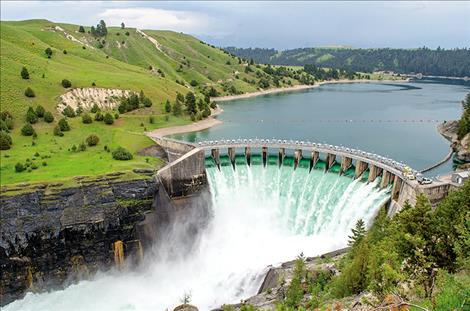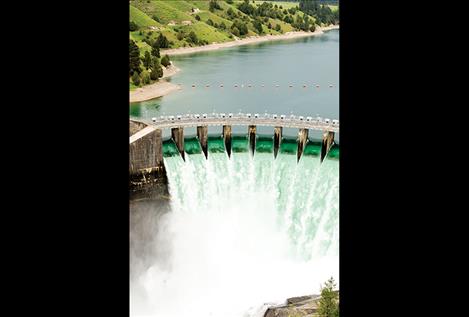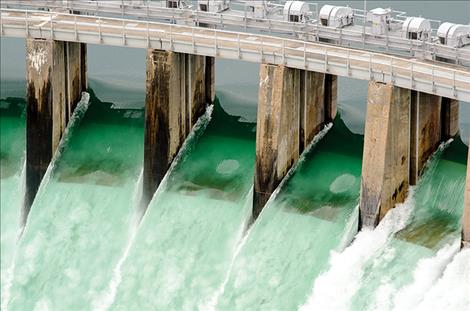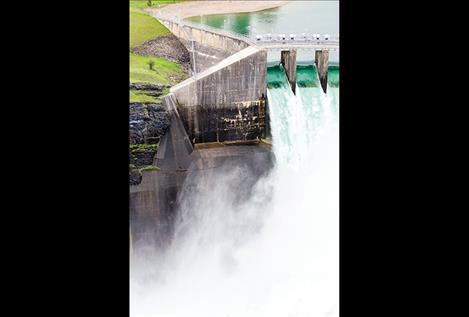SKQ Dam spillway gates scheduled for repairs
Hey savvy news reader! Thanks for choosing local.
You are now reading
1 of 3 free articles.
POLSON – Water pours through the Seli’š Ksanka Qlispe’ Project dam spillway gates with roaring power down the front of a 204-foot tall concrete structure, so it might make people a little nervous when they hear the words “malfunction” and “catastrophic consequences” in relation to the dam from the Federal Energy Regulatory Commission.
On April 11, FERC sent a letter to Energy Keepers, Inc., a tribally owned corporation tasked with managing the dam by the Confederated Salish and Kootenai Tribes. The letter was about needed repairs to the spillway gates. Fourteen gates open and close to adjust the amount of water flowing out of the dam.
FERC is a governmental regulatory entity tasked with inspecting the transmission of electricity. They state in a letter that the spillway gates need fixed at the SKQ Dam. A malfunction could “prevent the spillway gates from being operable during a significant flow event and could potentially lead to catastrophic consequences.”
Energy Keepers CEO Brian Lipscomb responded to the letter by saying: “The dam is not going to fail. We are fully operational. We are currently experiencing significant flow rates and everything is working.”
FERC could not be reached to explain what the catastrophe would involve, but Lipscomb presumed it was about flooding. He said FERC might be reacting to dam requirements with a “heightened sensitivity” after the 2017 incident with the Oroville Dam in California when the town was forced to evacuate. It was feared that the dam would fail and water would flow into town. The SKQ Dam is set up differently.
Lipscomb said the SKQ Dam isn’t holding back the entire lake, and if something did happen to the dam, the water would flow down stream away from the town. He said the natural shelf around the lake would also manage rising water.
In the letter, FERC notes spillway gate malfunctions were first documented in 2008 at the dam. CSKT acquired the dam in 2015. Lipscomb explained the problem. He said the gates open and close on a track much like how a train runs on rails.
“After 80 years of operation, the track is worn with a little rut at the bottom,” he said. “We need to go in and weld a steel plate in place to fix it.”
Energy Keepers planned to start repairs in February and finish them by May 2024, but weather conditions have delayed the work.
“We had record cold and icing issues,” he said. “With this year’s conditions, it wasn’t safe to continue the project.”
Because of the delay, FERC upped the deadline for the first phase of the project and wants it done by May of 2021. The entire project needs to be finished no later than May of 2025. One of the gates has already been repaired.
Lipscomb said Energy Keepers is in negotiations with FERC on those deadlines. He added that the spillway gate repair project isn’t the only thing being repaired at the dam since the tribe acquired it 31 months ago.
“Maintenance occurs on a regular schedule,” he said. “The concrete dam is in good condition. It’s the moving parts that wear out, and we are fixing them, and in the process of making improvements.”
To understand those repairs, it helps to have an idea about how the dam works. The lake is full at 1.2 million acre-feet of storage in the top ten feet. As of Monday, May 22, increased water from melting snowpack, measured at 130 percent of normal, and spring rains are causing the water to flow from the spillway gates at 45,000 cubic feet per second. “It’s a lot of water,” Lipscomb said.
Andrew Westerman, SKQ Dam chief infrastructure management officer, said the water moves from the dam and into a tunnel where it continues with enough force to rotate three turbines to create electricity.
Lipscomb said an engineering study is currently underway to determine the best way to upgrade two of the turbines in an effort to produce more power. One of the turbines was taken out and replaced with a stainless steel version in 2006.
“We are in the preliminary stages of that study,” he said.
Several pieces of equipment are attached to the turbine and spin much like a handheld electric drill to create the electricity. The stator windings are part of that system and two of the three were cleaned and restored.
The electrical current moves through this system after being generated in the turbine and goes into what looks like a large gray closet but is actually a static exciter used in the process of developing the electricity, which is being upgraded to a computer-based system.
In the control room, a few more of the instruments used to open and close the spillway gates are being upgraded, several have already been converted to a digital program. Manual controls will remain as a backup system.
Plant Operator Rod VanNess uses a computer system in the control room to change the flow of water coming through the spillway gates by opening and closing them. He also monitors the video cameras set up around the dam.
The electricity produced at the plant is sold to customers across Montana, the western United States and parts of Canada. Thirteen industrial customers in Montana purchase electricity from SKQ Dam. Mission Valley Power uses about ten percent of that electricity.















